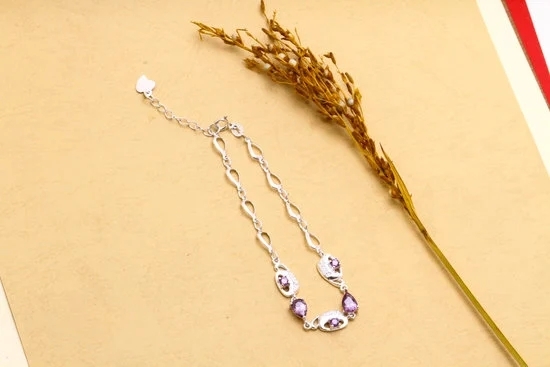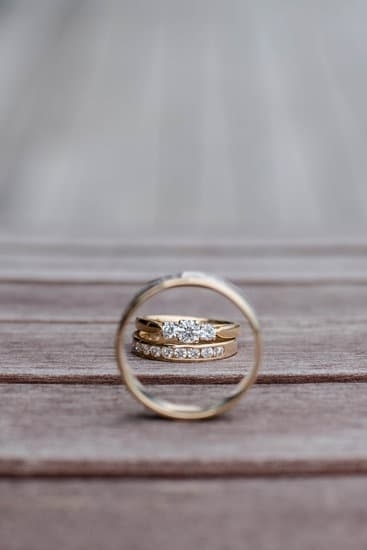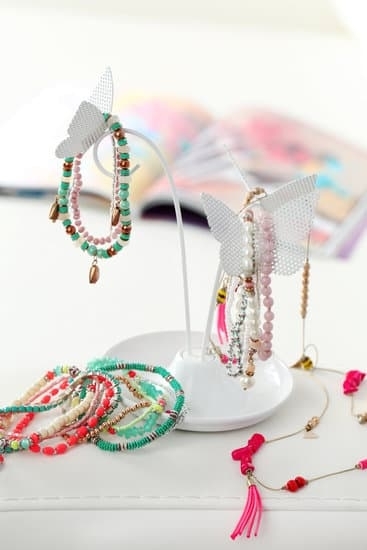Victorian Era Cameo Jewelry refers to jewelry produced during the reign of Queen Victoria, which was between 1837 and 1901. Ever since its debut in the fashion world, this type of jewelry has become highly sought after due to its elegant style and unique design elements. As with any antique, it can be difficult to definitively identify if a piece is genuine Victorian Era Cameo Jewelry, however there are a few characteristics which can help one make an informed appraisal.
Design and Style Elements
A defining characteristic of Victorian Era Cameo Jewelry is the detailed carving of the stone or shell which set within a gold or silver setting. Common stones used included agate and sardonyx; both becoming incredibly popular materials for creating cameos during this period as they had ranges of stylish colors including deep rose reds, creamy white and black tones.
In addition to this, there would often be intricate details around the edges of the cameo setting depicting mythological figures or motifs such as flowers and vines. These designs were usually hand-engraved by artisans giving each piece an individual quality.
Popularity
The popularity of Victorian Era Cameo Jewelry has grown significantly over recent years, owing mainly to its strong association with Queen Victoria herself who wore them frequently during her lifetime. Their timeless elegance continues to attract younger generations who value their classic yet unique aesthetic appeal as well as their historical significance that transcends generations.
Collecting these pieces is often seen as an investment into one’s future; many gemstones and pieces will only increase in worth over time due to their rarity and fine craftsmanship that went into making them originally almost two centuries ago.
Conclusion
The most notable trait of Victorian Era Cameo Jewelry is their way in withstanding the test of time; not only remaining fashionable but also holding a sentimental value amongst collectors due to the significant part they played during such a renowned era in history. With proper care taken when handling these delicate items – be it when cleaning or repairing – they can easily survive for another hundred years largely unscathed.
History
The Victorian Era was the reign of Queen Victoria from the 1800s to 1901 and was known for its romanticism. This era was an exciting period for art, including jewelry making. During this time cameos were extremely popular for their intricate and delicately crafted images. The Victorians saw them as indicative of a woman’s purity and her inner strength, making it particularly desirable among married women.
CameOS are jewels that feature a raised relief image typically carved in shell, stone or glass. These designs range from people to fantastical creatures, symbols and landscapes which are often accented with gold or silver frames.
It is absolutely breath-taking to see how the craftspeople managed to turn such small canvases into intricate pieces. Many of the figures showcase different allegories and stories depicting particular moments in time which could evoke powerful emotions in those who gazed upon their beauty.
The materials used to make Victorian era cameo jewelry varied greatly depending on the prestige of both the wearer and artist/gift-giver. Shell tended to be more accessible whereas semi-precious gems were reserved for those with more wealth or position within society – think wealthy merchants or tiaras worn by royalty.
It wasn’t just carved gemstones that could be used as cameos but also plaques made from metal, wax, enamel or resin. Regardless of what material was used, these beautiful items conveyed status amongst society AND acted as personal statements thanks to their unique designs.
While being visually stunning, these small portraits contained layers upon layers of symbolism attributed to them; some merely aesthetic conventions while others had personal meanings for their owner. They depicted characters from mythology, biblical stories, fairy tales and traditional fables representing concepts like truth, faithfulness and virtue – all held highly dear by the Victorians.
Through these works individuals were able to show off not only their eye for beauty but also a degree of sophistication when it came to understanding culture through such imagery – this level of knowledge set them apart from average folk at that era in history.
Styles
The Victorian Era of the late 1800s was a time of whimsy, romance, and beauty. During this time, cameo jewelry became extremely popular, with intricate designs filled with symbolic representations. Popularized by Queen Victoria herself, cameo jewelry was crafted from precious metals and stones, which made them desirable to many ladies of society.
Aside from the traditional stone-cut shapes, some pieces featured hardstones such as agate and onyx. The designs were classic yet unique, showcasing detailed figures that served as works of art among luxury items. A variety of heads featured in these designs range from classical sculpted portraits to portraits inspired by nature and other images of lightheartedness that appealed to the Victorian sentimentality during this era.
Cameo jewelry was a fashionable choice for women during the Victorian Era especially when it came to brooches and necklaces. Brooches had a fantastic array featuring diverse motifs such as mythical creatures like dragons, angel wings or mermaids.
Frame details also elaborated depending on their size; from plain metal frames in gold or silver to larger ones decorated with yellow or rose gold accents with diamond settings. Necklaces too exhibited many ornamental elements that could range from French lacy patterns implemented in rose gold along pendants featuring god goddesses or similar figures carved out in agate or ivory set against ribbons engraved with intricate designs all in one piece.
The traditional shell craft gain its popularity amongst young ladies who were engaging in ‘polishing’, which was an activity commonly encountered all over Europe during the era – antique shops today still boast some beautiful pieces taken part in this trend during the 19th century. The technique involved carving and shaping shells into desired shapes while adding embroidery techniques such as threading pearls onto leather straps which upon completion makes for delicate looking necklaces and bracelets.
; Usually layered to create an eye-catching element that showcased beauty in simplicity. Other types of Cameo jewelry included earrings fashioned after finger rings for pierced ears; finely handcrafted romantic pieces ideal for brides on their wedding day.
In conclusion, each piece exemplified fine craftsmanship tailored towards Victorian Era standards with attention paid to determining what constituted as fashionable attire at any given moment; certain styles that may have been popular at one point slowly gaining notoriety throughout Western Europe.
Making cameo jewelry ubiquitous among those who wanted to make statements about their taste in fashion – allowing individuals to integrate these gems into their look through clever placement within clothing options – ensuring an elegant result perfect for either casual looks or formal events alike.
Materials
The materials used to create Victorian Era cameo jewelry were often quite intricate and varied. The most popular materials included shell, coral, semi-precious gems such as garnet or chalcedony, and a variety of precious metals ranging from sterling silver and gold to copper and brass.
In some cases, people would also use ivory, jet, quartz crystal or sapphire for the base of their cameos. These materials provided both the necessary structure for creating intricate designs in the jewelry as well as durable qualities that could remain intact through a variety of wearing conditions.
Apart from these naturally-occurring materials, many artisans working during this era also employed man-made resins and plastics in their cameos due to their cheaper cost and bright colors. Celluloid was one of the most popular plastic compounds utilized throughout the creation of decorative jewels in this period; it enabled artesian to embed realistic depictions of landscapes with flora, fauna or scenes into brooches and necklaces alike.
This ability opened up an entirely new realm of creativity regarding cameo details which could not be achieved before with natural stones alone.
In addition to naturally gifted shell and precious metals, several other tools were necessary for the creation of Victorian Era cameos. Stone cutters relied on delicate instruments such as calipers and dividers which were designed specifically for judging dimensions when creating artwork from shells.
Microscopes and specialized magnifying glasses were also a must for picking out minute details when crafting miniature portrait carvings within each jewel’s design. Lastly, rotating wheels with variously sized diamond burs were used purely for removing material from within the carving area without damaging its surrounding structure without great accuracy and skill.
Given all these necessary components required to create Victorian cameo jewelry pieces any modern collector can appreciate how much time and effort went into these works centuries ago – setting today’s values even higher than ever before.
Care
Cameo jewelry is highly sought after in the modern world due to its associations with romance and luxury. Originating in the Victorian era, camel jewelry has consistently grown in popularity since its debut and is now featured prominently in many collections of necklaces and earrings.
As these pieces of jewelry can typically be highly valuable, it is important that owners understand how to properly clean and store their cameo jewelry if they are hoping to retain the original value and craftsmanship.
When it comes to cleaning Victorian era cameo jewelry, it is generally best practice to avoid using any harsh or abrasive chemicals as these can damage or corrode both the frame and stone of piece. Instead, a simple cleaning solution composed of a few drops of dish soap and lukewarm water should do the trick when coupled with some gentle scrubbing from a soft cloth or fine-bristled brush.
If needed, an additional buffing with a polishing cloth afterwards will ensure that the cameos will shine brightly once they are cleaned.
Once the cameo case has been successfully cleaned and dried, proper storage techniques ensure that it will remain in pristine condition for years to come. It should absolutely never be placed near any kind of strong magnetic field as metals such as brass used on many antiques can be initially drawn towards magnets before snapping away which could potentially create damages.
Furthermore, keeping historical pieces of antique jewelry out of direct sunlight also helps protect against discoloration from UV rays which may yellow precious metals over time. Additionally, storing cameo jewelry within fabric pouches separated from other types of jewelry or hard-plastic boxes can help avoid times where chains might become tangled which reduces stress on both delicate stones or jewels as well as their frames which can lead to cracking or breaking down entirely.
In summary, knowing how to care for Victorian era cameo Jewelry involves understanding certain cleaning techniques as well as the best storage practices to achieve longevity when dealing with this type of piece. Failing to utilize either method correctly can result in loss of value or destruction; therefore following dermatologist advice intended specifically for object preservation should be followed strictly by all owners who aim to maintain quality cameos throughout history.
Portrait Gallery
The Victorian Era was an extraordinary time for art and fashion, especially cameo jewelry. At this time, the process of carving cameos was quite popular within jewelry making. Artisans all over Europe crafted intricate figures and shapes out of semi-precious stones, such as chalcedony, jet, coral and agate. These portraits were intended to be small and decorative symbols of the wearer’s character or social identity.
One of the most prominent creators of Victorian Era cameo jewelry was Josef Köchler from Austria. He began his career as a portrait miniaturist before transitioning into creating larger works of art on large precious stones. Köchler eventually opened his own studio in Vienna where he created beautiful cameos for wealthy patrons throughout Europe.
He is known for his use of delicate details such as gloves, gowns, and veils along with traditional religious symbols like crosses or scriptures in his designs. His signature style has been described as divinely inspired with a touch of gothic darkness to it.
A second well known creator from this time period is Luigi Marchesi from Italy. He is notable for introducing new and modern materials to portrait carving at this time, leading to a more diverse range of artistic expression while still focusing on religious motifs.
He would often include classical symbols like laurel wreaths or grapevines in his carvings which helped solidify him among the greats of cameo-making history. His designs featured strong shapes contrasted with bright colors like browns and blue tones reminiscent of Tuscan landscapes making them iconic representations of life in Southern Europe during that era.
Both Köchler’s and Marchesi’s versions became widely popular during the height of the Victorian Era, with their supplies spreading even beyond European borders due to fashionable demand at that time for luxury items made by skilled craftsmen or women from all parts of the continent.
Thanks to these two creators’ contributions we now have detailed windows through which we can view one era’s interpretation of beauty – something that even today continues to draw admiration from generations past across cultures around the world.
Resources
Authentic Victorian era cameo jewelry is an exquisite and timeless form of art. Valued for its intricate craftsmanship and delicate detailing, many collectors delight in the beauty of this type of jewelry. For those seeking to add items of fine craftsmanship to their collection, sourcing and buying authentic Victorian era cameo jewelry can be an enjoyable experience.
First and foremost, collectors should understand that not all cameo Jewelry from the Victorian Era is genuine. It is important to do research on the item before committing to purchase it, or even bidding on it at an auction house.
Important things to look out for include identifying markings found on the piece such as hallmarks or manufacturer’s stamps, as well as visual clues like chips in the cameo itself, wear patterns on metal components or if the mounting appears too modern for a vintage item. Additionally, photographs of the piece should be inspected carefully from several angles so collectors may gain insight into its condition prior to purchase.
Once a piece has been decided upon it might either be purchased directly from a reputable source, like a fine jeweler’s shop online or live, who deals in antique items or at an auction house specializing in high-end antique garments including cameos and rings.
Experienced auctioneers will be knowledgeable about what they have listed and able to answer any questions collectors may have regarding authenticity; however, keeping track of prices realized over time can help provide buyers with more confidence when establishing value before purchasing.
In conclusion, collecting antique Victorian era Cameo Jewelry requires patience and dedication but is ultimately rewarding when pieces are added which reflect stellar craftsmanship for generations to come.
Conclusion
The Victorian Era was a period of beauty and romanticism that was centered mostly on artistry and fashion. Cameo jewelry was one of the most popular treasures produced at this time, becoming a beloved staple for society’s elite including Queen Victoria herself. This jewelry style is marked by portraits and landscapes etched in stone, metal and more. Many pieces would feature beloved figures of myth or classical imagery to represent important details such as fidelity and love.
Though these pieces may have originally been crafted in many materials, shell cameos are now the most recognized form of this classical Victorian jewelry. Shell was chosen mainly because it could be carved with relatively simple tools while still lasting an incredibly long time due to its hardy nature.
Shell also has a lovely lustre that still shimmers centuries later when properly cared for and maintained. Many pieces used sky blue to deep lavender colors as a base before being carefully sculpted with precious details.
Today we can use cameo jewelry to pay tribute to the talented artisans from the Victorian era who dedicated their craftsmanship to creating long-lasting symbols of power and grace. You can find new cameos made from various materials like glass or plastic, but if you seek out a genuine antique piece you will discover a living work of art that captures a tender moment between history and modern civilization.
It is no wonder why celebrities in recent years have been seen wearing these symbolic miniatures on everything from necklaces to earrings; they symbolize loyalty, faithfulness, human relationships, historical events and even messages sent through the ages that are meant for future generations alike.

Welcome to my jewelry blog! My name is Sarah and I am the owner of this blog.
I love making jewelry and sharing my creations with others.
So whether you’re someone who loves wearing jewelry yourself or simply enjoys learning about it, be sure to check out my blog for insightful posts on everything related to this exciting topic!





